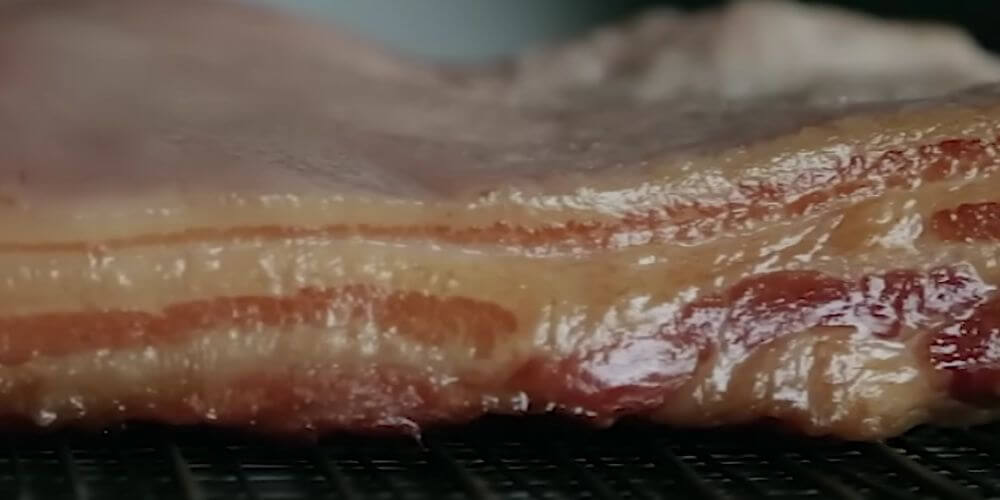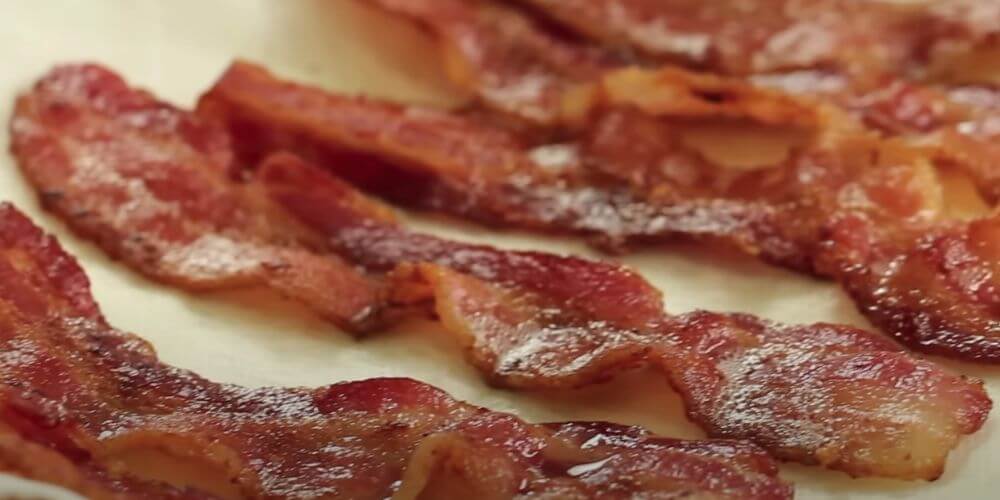Mastering Bacon: Why Curing Salts are Essential for Perfect Pork Belly

Crispy, salty, and oh-so-satisfying: bacon, the undisputed king of breakfast (and, let’s be honest, any meal that needs rescuing). But here’s the thing—those floppy, flavourless supermarket slices? Not even in the same league as your homemade masterpiece. The secret weapon?
Curing salts. Curing salts, a blend of table salt and additives like sodium nitrite or nitrate, play a pivotal role in not just preserving the meat but also enhancing its flavour, texture, and that tempting pink hue we all adore in bacon.
My journey and love affair with bacon began with the usual supermarket fare. While convenient, I always felt something was missing. The flavours were flat, and the texture was too uniform. It was on a whim that I ventured into the world of home-curing, and trust me, it was a game-changer. Starting with basic recipes, I soon found myself experimenting with different types of curing salts and techniques. Each batch of bacon was an exploration of flavours and a step closer to perfection. From initially struggling with getting the right salt-to-meat ratio to mastering the art of curing, it’s been a journey of discovery, learning, and, most importantly, savouring the delight of homemade bacon. And now, I’m here to share this culinary adventure with you, detailing why curing salts are not just an ingredient but the heart of mastering bacon-making
Beyond Just Preservation: Curing Salts
Forget the fancy peppercorns and secret rubs—the real magic behind mouthwatering bacon, succulent salami, and melt-in-your-mouth prosciutto lies in a humble hero: curing salts. These aren’t just your average table salts, folks. They’re the secret weapon of home charcuterie enthusiasts, packing a punch of flavour, preservation, and colour that transforms ordinary meat into culinary masterpieces.
Now, curing salts isn’t just fancy table salt with a blush. They’re a carefully crafted blend of sodium chloride (the good old-fashioned stuff) and two key ingredients: sodium nitrite and sodium nitrate. These may sound intimidating, but don’t let the names fool you. These key ingredients are critical in not only preserving meats and fish but also in imparting a distinct flavour profile that’s become synonymous with cured products. Furthermore, they’re instrumental in maintaining the appealing colour and texture of the cured meats—think of the characteristic pink in bacon or the deep red in salami.
The Science of Curing Salts: Why It’s Useful
Curing meats is an ancient art, transforming ordinary cuts into culinary masterpieces. But beyond the smoke and spice, a hidden hero lies dormant—curing salts. These seemingly simple crystals play a crucial role in preserving, flavouring, and texturising meats, unlocking a world of delicious possibilities. But how do they work their magic? Let’s dive into the science behind curing salts and explore their crucial role in the world of cured meats.
Preventing Spoilage
No one wants a food poisoning party, and curing salts are the bouncers on the door. Sodium nitrite and nitrate, their two main ingredients, inhibit the growth of harmful bacteria like the notorious Clostridium botulinum, ensuring your meat stays safe and delicious for longer. In my years of experience, I’ve seen how curing salts reduces the water activity in meat, making it an inhospitable environment for microbial growth. According to Mickey Parish, chair of the Nutrition and Food Science Department at the University of Maryland, salt and sugar can prevent microbial spoilage by osmosis, which sucks moisture out of the bacteria’s cells, killing them by dehydration. This aspect is crucial for meats that undergo long curing or aging processes, ensuring they remain safe and edible over time. Not only do they kill the bad guys, but they also dry out the meat, making it a less welcoming environment for any microbial mischief-makers.
Enhancing Flavour
Remember that deep, savoury goodness that defines cured meats? One of the most notable transformations I’ve observed in cured meats is the enhancement of flavour. Curing salts are the secret chefs behind it! Sodium nitrite works its magic on the meat’s proteins, creating nitrosyl-heme, the very compound responsible for that iconic cured meat flavour we all crave. It’s like a tiny flavour fairy, enhancing the natural taste and preventing it from going rancid. Trust me, the difference between cured and uncured is a taste explosion you won’t forget!
Developing Textures
Ever wondered why perfectly cured meats are moist and tender even after cooking? Curing salts have a hand in that too! They interact with the meat’s proteins, making them more soluble and altering their water-binding capacity. This translates to firmer, juicier meat that can withstand the heat without drying out. Think perfectly crisped bacon that still bursts with flavour and moisture—yeah, curing salts did that!
My journey with curing salts has been one of delicious discovery. From early, slightly too-salty experiments to the moment I bit into my first truly epic homemade bacon, I’ve learned to appreciate the power of these tiny pink crystals. They’re not just a safety measure; they’re the key to unlocking the full potential of meat and transforming it into something truly special.

Navigating the Pink Crystal Maze: Understanding Different Curing Salts
In the world of meat curing, understanding the different types of curing salts is crucial for achieving the perfect flavour and preservation. As someone who has spent years experimenting with various curing techniques, I’ve come to appreciate the distinct roles each type of curing salt plays. But not all curing salts are created equal! Each type boasts a unique blend of nitrite and nitrate content and additional ingredients, making them suitable for different curing methods and meats. Let’s dive into the most common types of curing salts and how they’re used in the culinary world:
- Prague Powder #1: Also called ‘Insta Cure #1 or Pink Curing Salt #1,’ this is the go-to for short-term cures of a few days to a week. Containing 6.25% sodium nitrite and 93.75% table salt, it delivers fast-acting preservation and a classic cured meat flavour. I’ve used this powder extensively for making delicious bacon and fresh sausages, where its ability to rapidly cure and add a robust flavour is unparalleled. Think bacon, chorizo, and pastrami—all perfect partners for Prague Powder #1’s rapid magic. My own bacon-crafting journey started with this trusty salt. Back then, even a crisp bite was an accomplishment! But as I experimented, I learned that for longer cures, like salami and prosciutto, a different crystal comes into play.
- Prague Powder #2: This powder is also called ‘Pink Curing Salt #2’. While Prague Powder #1 is the sprinter, Prague Powder #2 (aka Pink Curing Salt #2) is the marathon runner. This salt boasts both sodium nitrite and sodium nitrate, with the latter slowly breaking down into nitrite over time. Its lower sodium nitrite content (2.5%) and addition of sodium nitrate make it perfect for slow, months-long cures.
- Morton® Tender Quick®: These curing salts go beyond the basic nitrite-nitrate duo, adding a touch of sweetness with sugar and propylene glycol. I find it particularly useful for meats that will be cooked or smoked, such as bacon, ham, jerky, and corned beef. Its balanced composition of curing agents and sugar enhances both the flavour and texture of the meat, ensuring a succulent and savoury result. Just remember, the sugar adds a hint of sweetness, so adjust your recipe accordingly.
- Morton® Sugar Cure® (Plain and Smoke Flavour): Available in plain and smoke-flavoured variations, these blends add sugar and propylene glycol to the mix, balancing the saltiness and contributing to a moist, tender texture. The Smoke Flavour variant, in particular, adds a delightful smoky essence to meats, even if they aren’t smoked.
Choosing the right curing salt isn’t just about colour; it’s about science! Consider the curing time, cooking method, and desired flavour profile to make an informed decision. Remember, less is often more with nitrite, so always follow recommended amounts and consult reliable sources for detailed instructions.
Bacon Beyond the Ordinary: Curing Salt Combos for Flavour Explosions
There’s a world of flavours to explore in the realm of homemade bacon, and it all starts with the right curing salt blend. Here are some expert recommendations for different bacon styles, each with its own unique twist, using my experience in bacon curing to guide you. While classic salt and nitrite blends work for many styles, specific curing salts can unlock unique flavour profiles and enhance your bacon experience. Here are three must-try combinations:
Honey-cured Bacon
For a sweet and smoky twist, honey-cured bacon is a revelation. Think golden hues, a sticky glaze, and a flavour that dances between savoury and floral. For this masterpiece, I recommend Prague Powder #1; its swift-acting preservation ensures a perfect cure within 7 days. Combine it with kosher salt, dark brown sugar, red pepper flakes, smoked paprika, and cumin for a symphony of sweet, smoky, and spicy notes. Trust me, it’s a game-changer for breakfast!
Maple-cured Bacon
Embrace the maple syrup and sugar duo in a Prague Powder #1 base. Think 2 tablespoons each of maple syrup and brown sugar, alongside ¼ cup kosher salt and 2 teaspoons of Prague Powder #1. The result? A subtly sweet, smoky bacon that pairs perfectly with pancakes or elevates your BLT to new heights.
Spiced Bacon
Inject some heat with a cayenne pepper and paprika punch. Spice up your classic Prague Powder #1 and kosher salt blend with 2 tablespoons of cayenne pepper and smoked paprika. This fiery twist on bacon is perfect for spicy Bloody Mary mornings or adding a kick to burgers.
While each curing salt has its strengths, Prague Powder #1 is in my bacon-crafting heart.** Its versatility and rapid-acting properties make it ideal for various flavours and curing times. From classic to adventurous, it’s the perfect companion for exploring the endless possibilities of homemade bacon. I’ve used it in various recipes, from classic maple to exotic spiced versions, and it consistently delivers excellent results. It’s my go-to for achieving that perfect, professional-quality bacon at home.
Remember, choosing the right curing salt is just the first step. Spice combinations, smoking techniques, and even your choice of wood chips can all influence the final flavour profile. Don’t be afraid to get creative, and most importantly, have fun! The world of homemade bacon is your oyster (or should I say, pork belly?).
(Bacon) Wrapping Things Up
From my early days struggling to find that perfect blend of sweet and savoury to now being able to craft gourmet bacon masterpieces at home, it’s been an incredible journey of experimentation and learning. As I reflect on the transformative role of curing salts, I’m reminded that while technique and ingredients are important, the true joy lies in the process of creation. I encourage you to begin your own bacon-making adventure, start small, embrace failures, and most of all, have fun with it! The team at The Meat Inn Place is always happy to offer guidance for first-timers. And if you ever create bacon that seems worthy of the gods, I’d love to hear about it! Now, if you’ll excuse me, I see a gorgeous pork belly that’s calling my name. Happy curing!

Curing Salt FAQ
When preparing cured meats at our butcher shop, we often get asked, “What happens if I use too much curing salt?” It’s a crucial question, especially considering the health implications and the quality of the final product. Curing salt, a blend of table salt and either sodium nitrite or sodium nitrate plays a significant role in preserving and flavouring meats and fish while also maintaining their colour and texture.
Curing salt contains sodium nitrite or nitrate, which enhances flavour, colour, and preservation, but excessive intake can be harmful. Headaches, nausea, and even a rare condition affecting red blood cell oxygen capacity (methemoglobinemia) are possible.
To avoid these risks, stick to the recommended amount! As a general rule, use 1 teaspoon of curing salt per 5 pounds of meat, or 0.25% of the meat’s weight. Invest in a precise scale for accurate measurement, and always follow trusted recipe instructions.
Remember, when it comes to curing meats, following the recipe and measurement guidelines is not just about taste or texture but also about ensuring safety and health. If you’re ever in doubt about how much curing salt to use, feel free to consult with us at our butcher shop. We’re here to help you achieve the perfect balance of flavour, texture, and safety in all your cured meat preparations.
At The Meat Inn Place, we believe in informed choices for delicious meals. So, the question of cured meat and cancer deserves a clear answer.
The World Health Organisation (WHO) classifies cured meat as a Group 1 carcinogen, meaning it can cause cancer. Mainly linked to colorectal and stomach cancers, the risk increases with consumption amount and frequency.
Why?
Curing processes create chemicals like nitrites and HCAs, potentially damaging digestive tract cells and raising cancer risk. However, context matters. Current research suggests moderate, occasional consumption may not have a significant impact. Additionally, healthy lifestyle choices like exercise and a balanced diet play a crucial role in overall cancer risk.
At The Meat Inn Place, we’re passionate about helping you unlock the flavorful world of cured meats. While smoking often comes to mind, the magic of curing goes beyond the heat. So, can you cure meat without cooking it?
Absolutely! Curing is a preservation technique that relies on a blend of salt, sugar, and sometimes nitrites or nitrates to inhibit bacteria and enhance flavour. This process can be done without any cooking, opening up a delicious world of air-dried, cold-cured specialities. Many cured meats resulting from these processes don’t require cooking or smoking. Salami, prosciutto, biltong, pastrami, and smoked hams are prime examples of such meats. However, it’s important to note that some cured meats, like bacon, do need to be cooked before consumption for safety and flavour.
- Dry Curing: Rub your chosen cut with a curing mix and let it air-dry for weeks, creating masterpieces like prosciutto and salami.
- Wet Curing: Immerse your meat in a flavorful brine, infusing it with spices and slowly drawing out moisture for a tender, juicy result like pastrami.
- Equilibrium Curing: This precise method uses the meat’s moisture to absorb the curing ingredients, perfect for smaller cuts like bresaola.

